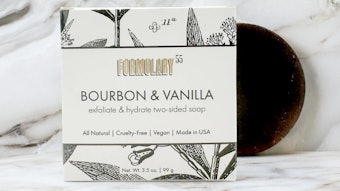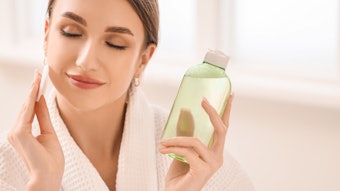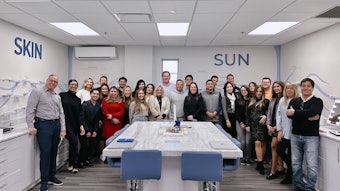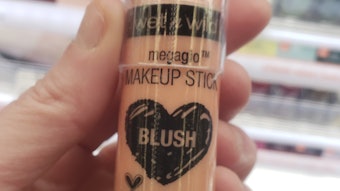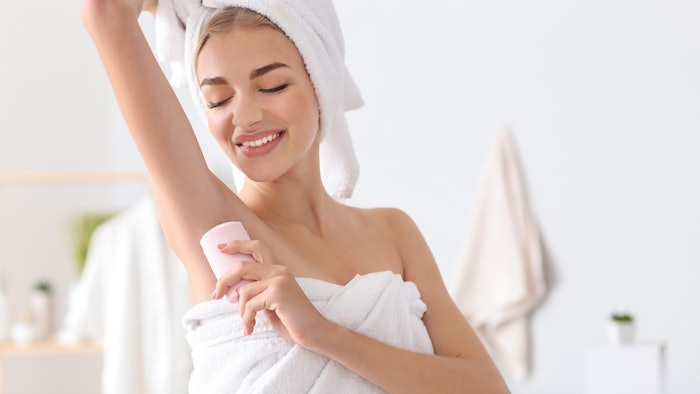
Body odor can be an unpleasant experience not only for the person creating the body odor, but for others who are exposed to it. The first instinct is often to mask the odor with a fragrance of sorts. However, this is not always the best solution since, as the fragrance wears off, body odor will arise again.
The current column considers an antimicrobial approach to body odor using alpha hydroxy acids (AHAs) in deodorants. As a refresh, it also provides background on sweating, compares antiperspirants versus deodorants, and reviews AHA effects.
Related: P&G's Secret DERMA+ Soothes Irritation, Controls Sweat/Odor
Sweat Glands
Humans generally sweat to regulate body temperature and remove waste from the skin. This sweat comes from glands that can be found all over the body. There are two types of sweat glands: eccrine and apocrine. Eccrine glands regulate body temperature and begin functioning at birth. These glands open directly at the surface of skin and are found in higher densities in the palms, soles, forehead and underarms. Sweat secreted from eccrine glands can contain a variety of chemicals such as salts, peptides, proteins, lactic acid, potassium, ammonia, calcium, uric acid and copper.
The apocrine gland opens at the hair follicle duct and only begins functioning at puberty. It is found primarily in the underarm, anus and breast areas. These glands secrete lipids, cholesterol, proteins, steroids, sulfur-containing amino acid and volatile fatty acids; this secretion is initiated through emotions such as excitement, anger and fear.
It is a common misconception that the chemicals secreted in sweat cause body odor but this is not the case; the sweat we secrete from eccrine and apocrine glands is odorless. Body odor is created when sweat encounters the bacteria readily found on the skin and goes through a chemical reaction of decomposition. Three bacteria cause this chemical reaction: Corynebacterium, Streptococcus and Propionibacteria. The optimal pH range for the growth of these bacteria is between 4.5 and 9.1-3
Deodorant vs. Antiperspirant
Another misconception is that deodorants and antiperspirants are the same. Antiperspirants are considered OTC (over-the-counter) drugs as they are meant to reduce/inhibit sweat. Deodorants can only mask odors. Antiperspirants use aluminum-based ingredients such as aluminum chloride, chlorohydrate, sesquichlorohydrate, dichlorohydrate and sulfate to reversibly block sweat by plugging the eccrine duct. Antiperspirants often are found in an anhydrous suspension in the form of a stick.
AHAs
AHAs are known to help smooth fine lines, improve skin texture and tone, and to unblock and cleanse pores.4 They work by shedding the skin surface, and the potency and extent of this exfoliation is dependent upon the concentration and final pH. The use of AHAs between 4% and 10% at a pH of 3.5-4.5 provides their known anti-aging properties, e.g., reducing hyperpigmentation, inflammation and acne with regular use. Some examples of AHAs include glycolic, malic, tartaric, lactic and mandelic acids.
The use of AHAs in deodorants may seem unconventional but it is an innovative way to tackle body odor: by rendering growth conditions unfit for microbes. Such formulas can be easily sold in the form of a liquid in a spray, roll-on or solution, and they are especially effective at a pH below 4.5—again, outside of the optimal growth range for odor-causing bacteria. In addition, AHAs can assist with exfoliation of the underarms, which in turn can reduce hyperpigmentation. Hyperpigmentation in this area is common amongst those on the high end of the Fitzpatrick scale; ingrown hairs from waxing or shaving also can cause discoloration.
Humectants and Moisturizers
Beyond, AHAs, humectants can be useful since AHAs can be a bit drying. These attract moisture to the surface of skin to counteract this effect. Ingredients such as glycerin, propanediol and hyaluronic acid can also assist in moisturizing the skin and decreasing any irritation from the use of high-concentration, low-pH AHAs.
Thickeners
It is important to use thickeners to ensure AHA-based deodorants are easily dispensed. Creating a Newtonian fluid that flows well and provides slip but whose application is still controlled can be difficult. Using an ingredient such as xanthan gum can help thicken the system while providing a bit of control and slip.
To provide a fresh, water-like break and additional control, incorporating a carbomer or acrylates/C10-30 alkyl acrylate crosspolymer gel can enhance the product's aesthetics and provide the consumer with a unique experience. It should be noted that carbomer and acrylates/C10-30 alkyl acrylate crosspolymer must be neutralized; ideally, early in the formulation.
Preservatives
Although the pH of this type of product is typically lower than that of standard cosmetic products, preservatives can still be useful. One recommended water-soluble preservative is a blend of sodium benzoate and potassium sorbate. It will not only incorporate well into a water-based system, but is also effective under a pH level of 5.5, which is ideal for an AHA system.
Conclusion
In closing, using an AHA to help reduce or even prevent body odor can be an innovative approach to an age-old problem. This targets the bacteria that cause the odor, and is not just about reducing sweat altogether. One of the drawbacks of using AHAs is their tendency to dry out the skin but this effect is positive in terms of sweat reduction. Thus, to formulate an effective AHA deodorant, both the AHA concentration and final pH of the formula must be optimized and can create a unique product experience.
Previous "Formulating on Trend:" K-beauty 'Glass Skin'
References
1.https://www.biorxiv.org/content/10.1101/2021.02.26.433016v1#:~:text=Here%2C%20the%20species%20Corynebacterium%20glutamicum,pH%20between%205.5%20and%209.
2. https://academic.oup.com/femsle/article/262/1/93/477890
3. https://www.ncbi.nlm.nih.gov/pmc/articles/PMC5756557/
4. https://www.fda.gov/cosmetics/cosmetic-ingredients/alpha-hydroxy-acids


